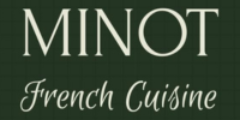“`html
Origins and Evolution of French Cuisine
French cuisine boasts a rich and storied history that stretches back to medieval times. Initially, French culinary practices were heavily influenced by the mores of the aristocratic tables of nobles and royalty. The grand feasts of medieval France, characterized by lavish meals and diverse preparations, laid the foundation for what would become a nationally cherished culinary tradition.
As history unfolded, significant events shaped and refined these culinary practices. The French Revolution in the late 18th century brought monumental changes, transferring cooking expertise from the private kitchens of aristocrats to the burgeoning restaurant culture accessible to the masses. This democratization of fine dining melded noble traditions with everyday tastes, leading to a more diversified culinary repertoire.
The two World Wars further influenced the development of French cuisine. The necessity of rationing during wartime led to creative culinary solutions and an emphasis on local ingredients, which have remained a staple of French cooking philosophy. Post-war periods saw a revival and romanticization of French cooking, with an emphasis on high-quality, well-prepared food.
Within France itself, the regional diversity is striking. Each region has contributed uniquely to the overall fabric of French cuisine. For example, Provence is known for its sun-soaked vegetables and herbs, while Normandy boasts creamy cheeses and rich butter thanks to its lush pastures. Burgundy brings its famed wines and robust stews, whereas Alsace reflects its Germanic influences in dishes such as choucroute garnie.
Significant figures in culinary history have also had a lasting impact. Auguste Escoffier, often revered as the father of modern French cuisine, revolutionized professional cooking and streamlined kitchen operations with his brigade system. His contributions helped elevate French cuisine to international acclaim. Julia Child, an American, played a monumental role in popularizing French cuisine in the United States with her accessible and enthusiastic approach to French cooking.
Through centuries of evolution and influence, French cuisine has emerged as a global standard for culinary excellence, revered for its rich history, diverse regional specialties, and the indelible contributions of iconic chefs and culinary pioneers.
“`
Core Ingredients and Signature Dishes
French cuisine is renowned for its use of high-quality, fresh ingredients that create a harmonious balance of flavors. At the heart of this culinary tradition are key ingredients such as butter, cheese, bread, seafood, and a myriad of herbs and spices. Butter, often referred to as the backbone of French cooking, is used extensively in sauces and pastries, contributing to the rich, creamy texture that many French dishes are known for.
Cheese is another cornerstone of French cuisine, with hundreds of varieties available, each boasting unique textures and flavors. From the creamy Brie and pungent Roquefort to the nutty Comté, cheese is not only enjoyed on its own but also plays a vital role in various recipes. Similarly, bread, particularly the baguette, is more than a staple; it is a cultural symbol of France, revered for its crispy crust and soft interior.
Seafood, sourced from the extensive French coastline, features prominently in dishes such as Bouillabaisse, a traditional Provençal fish stew. This dish showcases a dynamic mix of Mediterranean herbs and spices, creating an aromatic and flavorful broth. French cooking also emphasizes the use of fresh herbs—think thyme, rosemary, and tarragon—along with spices like cloves, nutmeg, and saffron, which add depth to the cuisine.
Among the iconic dishes of French cuisine, Coq au Vin stands out. Originating from the Burgundy region, this dish involves braising chicken in red wine, with slow cooking enhancing the flavors of garlic, mushrooms, and bacon. Ratatouille, another celebrated dish, exemplifies vegetarian fare, combining sautéed vegetables in a provincial fashion that highlights the essence of southern French cooking.
For dessert, Crêpes Suzette offers a delightful end to a meal. With its origins rooted in the early 20th century, this dish features thin crêpes flambéed with an orange-infused sauce, creating a balance of sweetness and citrusy sharpness. The role of wine cannot be overstated, with France producing an array of red, white, and sparkling wines that pair exquisitely with different cheeses and dishes, enhancing the gastronomic experience.
Fundamental to mastering French cuisine are techniques such as sautéing, braising, and baking. These methods are essential in developing the intricate flavors and textures that distinguish French dishes. Sautéing, a rapid cooking technique, retains the vividness of ingredients, while braising involves slow-cooking in liquid, extracting the full nuances of flavor. Baking, especially in the realm of pastries, incorporates meticulous precision to achieve delectable results.
